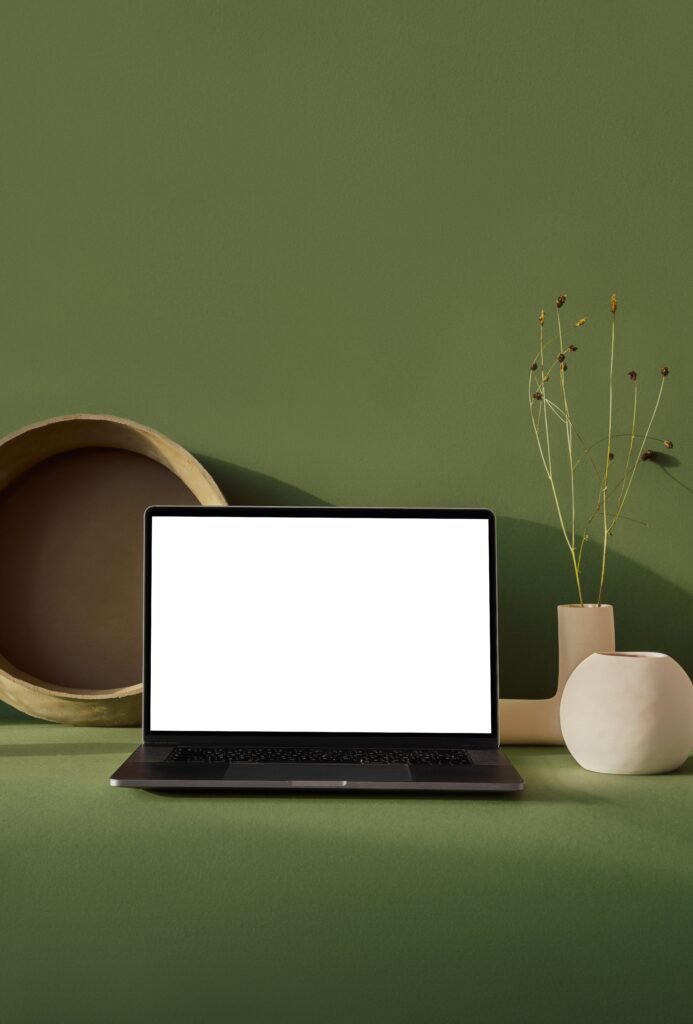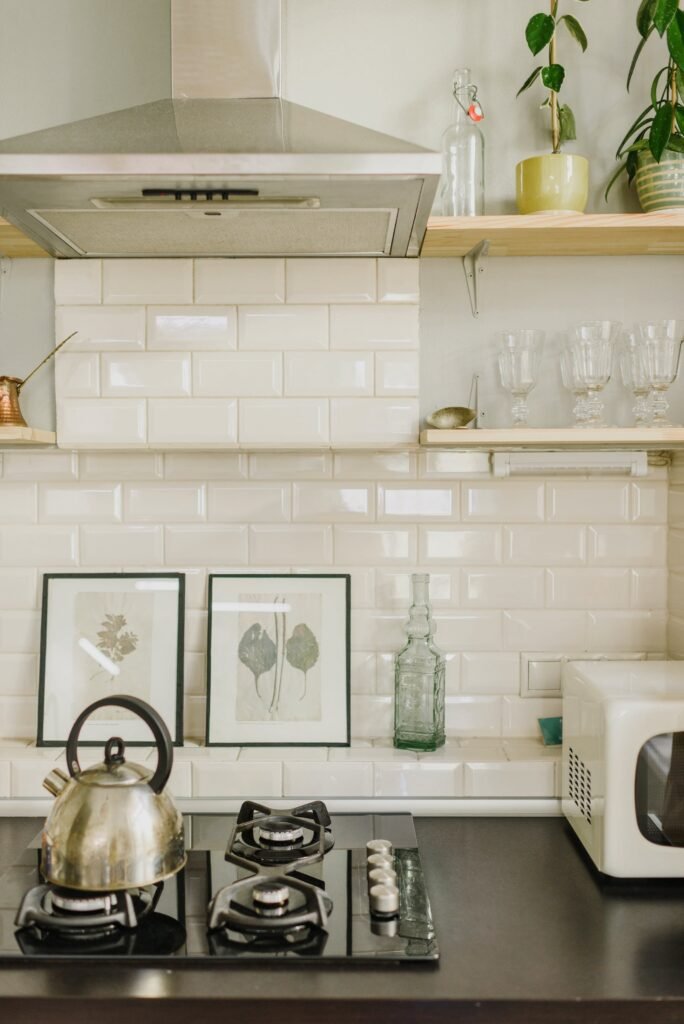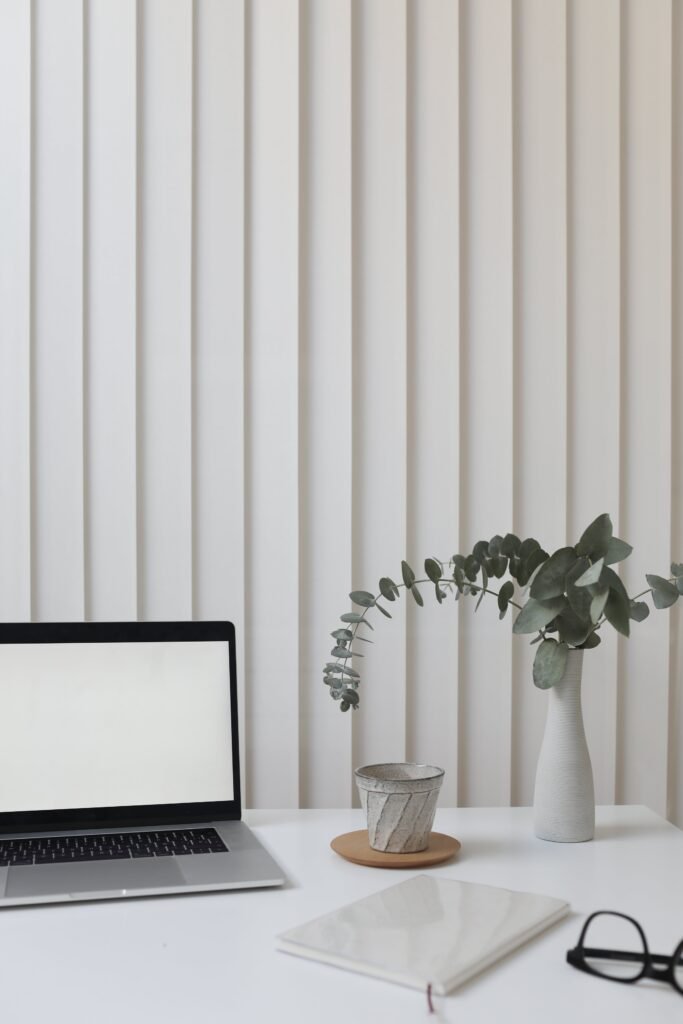
Are you tired of feeling overwhelmed by clutter and constantly chasing after material possessions? If so, then it’s time to embrace the minimalist lifestyle. In a world filled with excess, the concept of minimalism offers a refreshing approach to living with intention and simplicity. By removing the unnecessary and focusing on what truly matters, you can free up space in both your physical surroundings and your mind. In this article, we will explore the key principles of mastering the minimalist lifestyle and discover how it can bring more contentment and fulfillment into your life.
Check out our product reviews.
Understanding Minimalism
Defining minimalism
Minimalism can be defined as a deliberate and intentional way of living that focuses on simplifying various aspects of life. It involves owning and consuming only the necessary items, eliminating excess clutter from physical spaces, optimizing digital life, adopting a minimalist wardrobe, embracing minimalist design principles, and practicing mindful consumption and finances. Minimalism is not just about getting rid of material possessions, but about creating a sense of peace and fulfillment by focusing on what truly matters in life.
The philosophy behind minimalism
At its core, minimalism is rooted in the belief that happiness and contentment can be found by reducing materialistic distractions and leading a more deliberate and purposeful life. By letting go of the unnecessary, one can create space for what truly brings joy and fulfillment. Minimalism encourages individuals to detach themselves from the consumerist mindset and societal pressures, and instead prioritize experiences, relationships, and personal growth. It is about finding balance, clarity, and freedom in a world that often overwhelms us with excess.
Benefits of minimalist lifestyle
Embracing a minimalist lifestyle can bring a multitude of benefits. By decluttering physical spaces, streamlining digital life, and adopting minimalist design principles, individuals can experience a greater sense of calm and reduced stress levels. Minimalism allows for better focus, increased productivity, and improved mental clarity. It can also lead to financial freedom and an enhanced appreciation for the things that truly matter. Ultimately, minimalism offers the opportunity to create a life that is aligned with one’s values and priorities.
Decluttering Your Physical Space
Assessing your belongings
To begin decluttering your physical space, it is important to assess your belongings. Take a thorough inventory of everything you own and evaluate their usefulness and significance in your life. Ask yourself if each item truly brings value and joy or if it is simply occupying space. Identify items that you no longer need or use, and be willing to let go of them.
Creating a clutter-free environment
Once you have assessed your belongings, the next step is to create a clutter-free environment. Begin by removing any items that are no longer necessary or meaningful to you. Utilize storage solutions and organizational techniques to create designated spaces for each item. Keep surfaces clear and minimize visual distractions. Maintaining a clutter-free environment will promote a sense of calm and allow you to appreciate the items that truly matter.
Organizational techniques
Implementing organizational techniques can help you maintain an orderly and functional space. Use storage bins, shelves, and containers to neatly categorize and store your belongings. Label everything to ensure easy identification. Utilize drawers and dividers to keep smaller items organized. Develop a system that works for you and establish habits to consistently maintain organization.
Effective storage solutions
Choosing effective storage solutions is crucial in maintaining a minimalist lifestyle. Opt for furniture pieces that have built-in storage compartments, such as ottomans or beds with drawers. Utilize vertical space by installing shelves or hanging storage organizers. Maximize closet space by employing space-saving hangers or using storage boxes. Invest in multipurpose items that serve both a functional and storage purpose. Effective storage solutions will help you maximize your physical space and minimize clutter.

This image is property of images.pexels.com.
Check out our product reviews.
Streamlining Your Digital Life
Reducing digital distractions
In today’s digital age, it is important to reduce digital distractions in order to maintain a minimalist lifestyle. Start by decluttering your digital devices. Delete unused apps, organize your home screen, and unsubscribe from unnecessary email lists. Limit your time on social media and consider using productivity apps or browser extensions to block distracting websites. By minimizing digital distractions, you can free up mental space and focus on what truly matters.
Organizing digital files
Organizing your digital files is essential for maintaining a streamlined digital life. Develop a filing system that makes it easy to locate and access your documents. Create folders and subfolders based on specific categories or projects. Regularly delete unnecessary files and archive important ones. Backup your files to prevent loss and maintain a clutter-free digital space.
Simplifying online subscriptions
Online subscriptions can quickly accumulate and clutter your inbox. Take the time to evaluate your subscriptions and determine which ones truly add value to your life. Unsubscribe from newsletters, promotional emails, and services that no longer align with your interests or priorities. By simplifying your online subscriptions, you can reduce inbox clutter and focus on the subscriptions that truly matter.
Optimizing device usage
Optimizing your device usage is another important aspect of streamlining your digital life. Minimize the number of devices you own and utilize the ones you have to their fullest potential. Consider consolidating multiple devices into a single device that meets all your needs. Practice digital minimalism by deleting unused apps and organizing your home screen for quick and easy access to essential apps. This will help you optimize your digital space and create a more intentional and efficient digital experience.
Adopting a Minimalist Wardrobe
Curating a capsule wardrobe
Curating a capsule wardrobe is a key step in adopting a minimalist wardrobe. A capsule wardrobe comprises a limited number of versatile and high-quality clothing items that can be mixed and matched to create a variety of outfits. Start by decluttering your current wardrobe and donating or selling items that no longer serve you. Choose timeless and neutral pieces that can be worn in different combinations. By curating a capsule wardrobe, you can simplify your clothing choices and eliminate the overwhelming task of deciding what to wear.
Dressing with intention
Adopting a minimalist wardrobe means dressing with intention and purpose. When selecting clothing items, consider their practicality, durability, and how well they align with your personal style. Focus on quality over quantity and invest in well-made pieces that will stand the test of time. By dressing with intention, you can cultivate a personal style that is authentic and reflective of your values.
Quality over quantity
Quality over quantity is a fundamental principle of minimalism, and it applies to your wardrobe as well. Instead of buying a large number of inexpensive and poorly made clothing items, focus on investing in high-quality pieces that will last. Look for durable materials, superior craftsmanship, and timeless designs. By opting for quality over quantity, you can create a wardrobe that is sustainable, versatile, and built to last.
Essential clothing pieces
When curating a minimalist wardrobe, it is important to include essential clothing pieces that form the foundation of your outfits. These may include items such as a classic white shirt, a well-fitted blazer, a versatile pair of jeans, a little black dress, and comfortable yet stylish shoes. These essential pieces can be easily mixed and matched to create a variety of looks for different occasions. By incorporating essential clothing pieces, you can simplify your wardrobe and enhance your personal style.

This image is property of images.pexels.com.
Embracing Minimalist Design Principles
Understanding minimalist aesthetics
To embrace minimalist design principles, it is important to understand the aesthetics associated with minimalism. Minimalist design is characterized by simplicity, clean lines, and minimal ornamentation. It focuses on functionality and the use of space as a design element. Neutral colors, natural materials, and abundant natural light are often used to create a calming and harmonious environment. By understanding minimalist aesthetics, you can effectively apply these principles to your own spaces.
Simplifying interior design
Simplifying your interior design is a key element of embracing minimalism. Start by decluttering your space and removing unnecessary decorative items. Choose furniture and decor pieces that are simple, functional, and complement the overall aesthetic. Organize and arrange your belongings in a way that promotes flow and spaciousness. Keep surfaces clear and only display items that are truly meaningful. By simplifying your interior design, you can create a visually appealing and serene atmosphere.
Choosing neutral colors
Neutral colors are essential in minimalist design. Opt for colors such as white, beige, gray, or black for your walls, furniture, and decor. These colors create a calm and timeless backdrop that allows other elements in the room to shine. Incorporating pops of color sparingly through accessories or artwork can add visual interest without overwhelming the space. By choosing neutral colors, you can create a cohesive and tranquil environment.
Using natural materials
Incorporating natural materials into your design is a hallmark of minimalist aesthetics. Choose furniture and decor items made of natural materials such as wood, stone, or leather. These materials bring warmth, texture, and a sense of connection to nature. Avoid excessive use of synthetic or artificial materials. By using natural materials, you can create a space that feels inviting, organic, and in harmony with the principles of minimalism.
Living a Minimalist Lifestyle with Kids
Teaching children about minimalism
Living a minimalist lifestyle with kids may present its own challenges but can also bring numerous benefits. Start by teaching children about the principles of minimalism in an age-appropriate manner. Explain the concepts of decluttering, making intentional choices, and the importance of valuing experiences over material possessions. Encourage them to develop gratitude and contentment for what they have rather than constantly seeking more.
Organizing toys and belongings
Organizing toys and belongings is essential to maintaining a minimalist lifestyle with kids. Involve your children in the process by teaching them the importance of keeping their spaces tidy and organized. Utilize storage solutions such as bins, shelves, and toy chests to categorize and store toys. Regularly assess and declutter toys, donating or rotating them to prevent overwhelming clutter. By organizing toys and belongings, you can create a functional and clutter-free environment for your children.
Reducing consumption
Reducing consumption is an important aspect of minimalism, especially when raising children. Encourage mindful purchasing habits and teach your children the value of quality over quantity. Prioritize experiences and meaningful gifts over material possessions. Find creative and alternative ways to celebrate special occasions that do not involve excessive gift-giving. By reducing consumption, you can instill in your children the values of simplicity, sustainability, and contentment.
Creating meaningful experiences
Living a minimalist lifestyle with kids provides an opportunity to focus on creating meaningful experiences and memories. Spend quality time together engaging in activities that foster creativity, learning, and connection. Emphasize the importance of experiences over material possessions, and encourage your children to appreciate and cherish these moments. By creating meaningful experiences, you can cultivate a sense of fulfillment and promote a minimalist mindset in your children.

This image is property of images.pexels.com.
Mindful Consumption and Finances
Evaluating your purchasing habits
Practicing mindful consumption involves evaluating your purchasing habits and being intentional about where you invest your money. Before making a purchase, ask yourself if the item aligns with your values and if it is truly necessary. Consider the long-term impact of the purchase, both financially and environmentally. Avoid impulse purchases and strive to make informed decisions that contribute to your overall well-being and happiness.
Budgeting with minimalist principles
Budgeting with minimalist principles involves prioritizing value and purpose in your financial decisions. Assess your expenses and determine which ones truly align with your priorities. Cut back on unnecessary expenses and redirect your resources towards experiences, personal growth, and investments in quality. By budgeting with minimalist principles, you can achieve financial freedom and prioritize what truly matters in your life.
Investing in quality
Minimalism encourages investing in quality items that are built to last. When considering a purchase, prioritize durability, sustainability, and functionality. Opt for well-made products from reputable brands that align with your values. While initial costs may be higher, investing in quality items will ultimately save you money in the long run as they require less frequent replacement. By investing in quality, you can reduce waste, minimize clutter, and enhance your overall satisfaction with your belongings.
Avoiding unnecessary expenses
Avoiding unnecessary expenses is a fundamental principle of minimalism. Take the time to assess your needs versus wants and determine which expenses are truly necessary for your well-being and happiness. Reduce unnecessary subscriptions, dining out expenses, and impulse purchases. Embrace a more frugal and mindful approach to spending, and prioritize experiences over material possessions. By avoiding unnecessary expenses, you can achieve financial stability and align your spending with your values.
Developing Minimalist Habits
Practicing mindfulness
Practicing mindfulness is essential in developing minimalist habits. Mindfulness involves living in the present moment, being aware of your thoughts and actions, and making deliberate choices. Apply mindfulness to all areas of your life, from decluttering physical spaces to making purchasing decisions. By practicing mindfulness, you can develop a deeper understanding of your true needs and values, and make choices that align with them.
Prioritizing experiences
Minimalism encourages prioritizing experiences over material possessions. Value the moments and experiences that bring joy and fulfillment to your life. Instead of accumulating more possessions, invest in creating memorable experiences, traveling, learning new skills, or spending quality time with loved ones. By prioritizing experiences, you can foster personal growth, enhance your relationships, and create a deeper sense of fulfillment.
Scheduling regular decluttering sessions
Regular decluttering sessions are crucial in maintaining a minimalist lifestyle. Set aside dedicated time to reassess your belongings, declutter your physical and digital spaces, and evaluate your priorities. Whether it’s a weekly, monthly, or seasonal decluttering session, establish a routine that works for you. By scheduling regular decluttering sessions, you can prevent the accumulation of unnecessary items and maintain a clutter-free environment.
Building a sustainable routine
Building a sustainable routine is key to sustaining a minimalist lifestyle. Incorporate habits such as mindful consumption, intentional decision-making, and organizing into your daily life. Prioritize self-care, establish a regular cleaning routine, and practice self-reflection. By building a sustainable routine, you can create a sense of order, reduce stress, and ensure that minimalism becomes a long-term and fulfilling lifestyle choice.
Finding Balance and Fulfillment
Identifying what truly matters
Finding balance and fulfillment in a minimalist lifestyle begins with identifying what truly matters to you. Reflect on your values, passions, and priorities. Determine the aspects of your life that bring you joy, contentment, and a sense of purpose. By identifying what truly matters, you can focus your time, energy, and resources on the things that align with your values, and let go of the excess that distracts from your true happiness.
Cultivating gratitude
Cultivating gratitude is a powerful practice that can enhance your journey towards balance and fulfillment. Take the time to acknowledge and appreciate the blessings in your life, both big and small. Practice gratitude daily by keeping a gratitude journal, expressing appreciation to loved ones, or engaging in acts of kindness. By cultivating gratitude, you can shift your focus to the positive aspects of your life, develop a greater sense of contentment, and find fulfillment in the present moment.
Building meaningful relationships
Building meaningful relationships is essential for finding balance and fulfillment in a minimalist lifestyle. Surround yourself with supportive and like-minded individuals who share your values. Prioritize quality time spent with loved ones, fostering deep connections and meaningful conversations. Invest in nurturing and cultivating relationships that bring joy, support, and a sense of belonging. By building meaningful relationships, you can enrich your life and create a sense of fulfillment and purpose.
Exploring personal passions
Exploring your personal passions is a key component of finding balance and fulfillment. Dedicate time and energy to pursuing activities that ignite your passion, creativity, and personal growth. Engage in hobbies, develop new skills, or explore interests that bring you joy and a sense of fulfillment. By exploring your personal passions, you can cultivate a life that is aligned with your authentic self and find a deeper sense of purpose.
Overcoming Challenges and Staying Motivated
Dealing with consumerism
Consumerism can pose a challenge when trying to embrace a minimalist lifestyle. Avoid falling into the trap of constantly wanting more and succumbing to societal pressures. Develop a mindset that prioritizes mindful consumption over mindless accumulation. Remind yourself of the benefits of minimalism, such as reduced stress, enhanced focus, and financial freedom. Focus on appreciating what you already have and finding contentment in simplicity.
Resisting societal pressures
Resisting societal pressures to conform to consumerist ideals can be difficult but is essential in maintaining a minimalist lifestyle. Surround yourself with like-minded individuals who support your values and choices. Stay true to your own definition of success and happiness, and do not let external influences dictate your priorities. Remember that minimalism is a personal journey, and your choices are valid and meaningful.
Coping with emotional attachments
Letting go of emotional attachments to material possessions can be challenging. Recognize that memories and experiences are what truly matter, not the physical items associated with them. Practice detachment and gratitude for the lessons and emotions connected to those possessions. Develop strategies such as taking photographs or writing about the sentimental value of items before letting them go. By coping with emotional attachments, you can create space for new experiences and personal growth.
Seeking support and inspiration
Seeking support and inspiration is crucial in overcoming challenges and staying motivated on your minimalist journey. Connect with like-minded individuals through social media, blogs, or local communities. Share your experiences, seek advice, and offer support to others. Surround yourself with positive influences and engage in regular self-reflection. Draw inspiration from minimalist influencers, authors, or artists who can provide guidance and motivation. By seeking support and inspiration, you can stay motivated and continue to thrive in your minimalist lifestyle.
In conclusion, embracing a minimalist lifestyle involves intentional choices, decluttering physical and digital spaces, adopting minimalist design principles, practicing mindful consumption, and cultivating gratitude and balance. By understanding the philosophy of minimalism and incorporating these principles into various aspects of life, you can create a sense of peace, fulfillment, and purpose. Embrace the journey towards minimalism and enjoy the countless benefits it brings.
RELATED POSTS
View all


